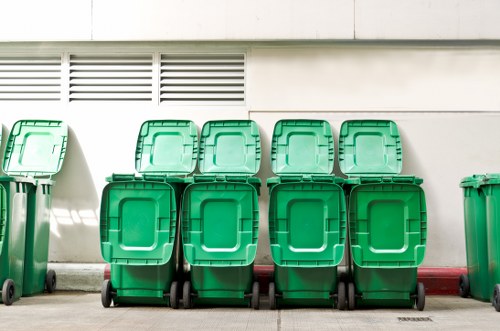Effective Council Large Item Collection in Furniture Disposal
Understanding Council Large Item Collection

Council large item collection is a crucial service provided by local authorities to assist residents in disposing of bulky furniture and other sizable items. This service ensures that large items are removed responsibly, reducing environmental impact and promoting recycling and reuse.
Many homeowners struggle with disposing of old furniture, whether it's due to space constraints, environmental concerns, or the lack of proper disposal methods. Council large item collection addresses these issues by providing a convenient and efficient way to manage unwanted large items.
By utilizing this service, residents can ensure that their old furniture is either recycled, repurposed, or disposed of in an eco-friendly manner, aligning with sustainability goals and reducing landfill waste.
Scheduling a Furniture Disposal Service

Scheduling a large item collection with your council is a straightforward process. Most councils offer online booking systems where residents can select a convenient date and time for collection. Alternatively, phone bookings are often available for those who prefer direct communication.
It's important to check the specific guidelines and requirements of your local council, as procedures may vary. Some councils may have restrictions on the types of items they accept or the frequency of collections.
Preparing your furniture for collection involves ensuring that items are accessible and properly placed for the collection team. This may include moving items to the roadside or designated collection area and securing any loose parts.
Types of Furniture Accepted

Most councils accept a wide range of large furniture items for collection. Common items include sofas, beds, wardrobes, dining tables, and chairs. Additionally, some councils may also collect appliances and electronic waste as part of their large item services.
It's essential to verify which items are eligible for collection, as hazardous materials such as chemicals, paints, and certain electronics may have specific disposal requirements. Non-acceptable items should be handled through alternative disposal channels to ensure safety and compliance with environmental regulations.
Recycling and responsible disposal of furniture contribute significantly to reducing waste and conserving natural resources. By following council guidelines, residents can play an active role in promoting sustainability within their communities.
Preparation Tips for Efficient Collection

To facilitate a smooth and efficient large item collection, preparation is key. Start by decluttering and sorting through the furniture you intend to dispose of. Determine which items are still useful and which ones need to be removed.
Disassemble large furniture pieces if possible, as this can make transportation easier and reduce the likelihood of damage during collection. Removing legs from chairs or tables, disassembling bed frames, and taking apart modular sofas are common steps that can be taken.
Ensure that all items are clean and free from any personal belongings. This not only helps the collection team but also ensures that reusable items can be appropriately processed if they are deemed salvageable.
Environmental Benefits of Proper Furniture Disposal

Proper disposal of large furniture items has significant environmental benefits. By recycling materials such as wood, metal, and fabric, the demand for new raw materials decreases, conserving natural resources and reducing energy consumption associated with manufacturing.
Recycling also minimizes the amount of waste sent to landfills, mitigating the release of methane and other harmful gases that contribute to climate change. Additionally, repurposing furniture extends the lifecycle of products, promoting a circular economy where materials are reused rather than discarded.
Participating in council large item collection programs demonstrates a commitment to environmental stewardship and encourages others to adopt sustainable disposal practices.
Cost and Accessibility of Services

One of the primary advantages of using council large item collection services is their affordability. Many councils offer free or low-cost collection options for residents, making it an accessible solution for those on a budget.
Eligibility criteria may apply, such as income thresholds or the necessity of the item being collected. It's advisable to consult with your local council to understand the specific costs and eligibility requirements before scheduling a collection.
Accessibility is another key factor, with councils often providing services to a wide range of neighborhoods and accommodating special requests for individuals with mobility issues or other special needs.
Alternative Disposal Options

While council large item collection is a convenient option, there are alternative methods for disposing of bulky furniture. Donation centers, charity organizations, and second-hand stores accept gently used items, extending their lifecycle and benefiting those in need.
Private waste management companies offer specialized disposal services for a fee, providing flexibility in scheduling and handling specific types of furniture or materials that may not be accepted by the council.
Additionally, community swap events and online marketplaces provide platforms for residents to sell or give away unwanted furniture, fostering a sense of community engagement and reducing waste.
Regulations and Compliance

Adhering to local regulations regarding furniture disposal is essential to avoid fines and ensure environmentally responsible practices. Councils set guidelines that outline permissible disposal methods, accepted item types, and scheduling protocols to maintain public health and safety.
Understanding and following these regulations helps in maintaining a clean and safe community environment. Non-compliance can result in penalties and hinder the effectiveness of waste management programs.
Staying informed about updates to disposal regulations and participating actively in community initiatives can contribute to more efficient and sustainable waste management systems.
Benefits to the Community

Council large item collection services offer numerous benefits to the community, including reducing visual clutter, enhancing neighborhood aesthetics, and promoting public health by eliminating potential hazards associated with abandoned furniture.
By ensuring proper disposal, councils help prevent pests and vermin from inhabiting discarded items, maintaining a hygienic and safe environment for all residents.
Moreover, these services support local economies by creating jobs within the waste management and recycling sectors, fostering community growth, and encouraging sustainable development.
Technological Advancements in Collection Services

Advancements in technology have significantly improved the efficiency and effectiveness of council large item collection services. Online platforms and mobile applications streamline the booking process, making it easier for residents to schedule collections and track their requests.
GPS and routing software optimize collection routes, reducing fuel consumption and minimizing the environmental footprint of waste management operations. Real-time data analytics enable councils to monitor service performance, address bottlenecks, and enhance overall service quality.
Innovative recycling technologies facilitate better sorting and processing of collected items, increasing the rate of materials diverted from landfills and enhancing the overall sustainability of disposal practices.
Future Trends in Furniture Disposal

The future of furniture disposal is leaning towards greater sustainability and circular economy principles. Innovations in materials science are leading to the creation of more recyclable and biodegradable furniture, simplifying the disposal process and reducing environmental impact.
Smart inventory systems and IoT-enabled devices allow for better tracking and management of furniture lifecycles, promoting reuse and efficient resource allocation. These technologies enable more effective collection strategies and support the development of eco-friendly disposal methods.
Educational initiatives and public awareness campaigns are expected to play a significant role in shaping future disposal practices, encouraging individuals to adopt more responsible and sustainable approaches to furniture management.
Conclusion

Council large item collection services are an essential component of modern waste management systems, providing residents with a practical and environmentally responsible way to dispose of bulky furniture and other sizable items. By leveraging these services, communities can enhance sustainability, reduce landfill waste, and promote the recycling and reuse of materials.
Understanding the scheduling process, preparation tips, and the types of items accepted ensures a smooth and efficient disposal experience. Additionally, awareness of alternative disposal options and compliance with local regulations further supports responsible waste management practices.
As technology continues to advance and sustainability becomes increasingly prioritized, council large item collection services will evolve to meet the changing needs of communities, fostering a cleaner and greener environment for future generations.
Contact us today to schedule your large item collection and contribute to a more sustainable community.